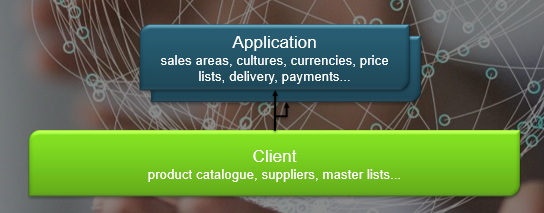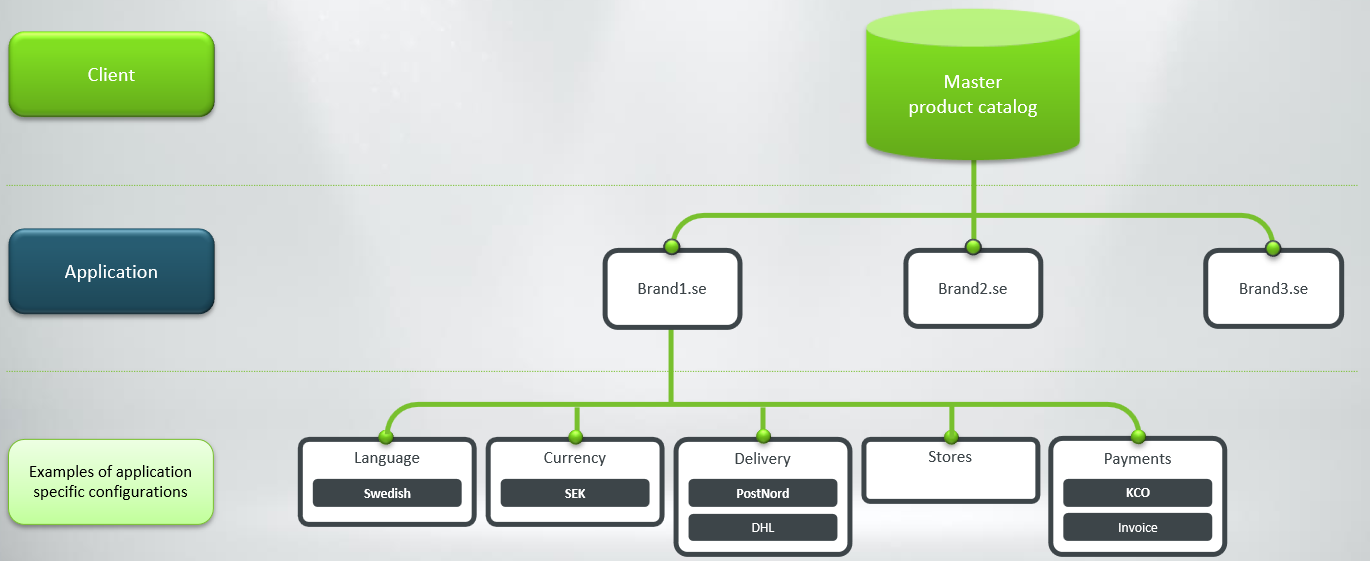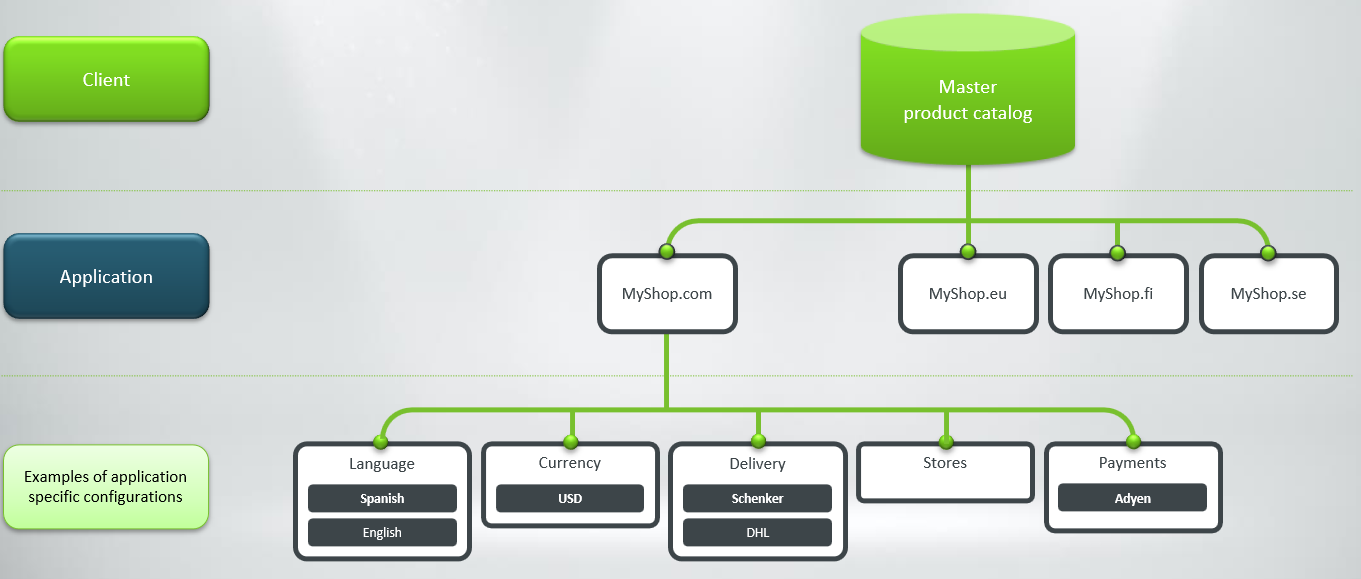This page describes how to structure applications in Norce Commerce to support different business needs, including multi-market and multi-brand strategies. Each section is self-contained and provides context for the described scenario.
Applications in Norce Commerce are containers for business logic and configuration. Each application targets a specific business scenario, such as a market or brand.
Norce Commerce is built on a data layer containing client information (products, suppliers, customers, etc.). On top of this, applications provide configuration and business rules tailored to client needs. Each application acts as a "container" for these rules and configurations, allowing multiple applications for different business types.
Image Description:
Illustration showing the relationship between the client data layer and applications as containers for business logic and configuration.

- Client: Stores shared data such as product catalog and suppliers.
- Application: Adds configurations like languages (cultures), VAT regions (sales areas), currencies, assortments (price lists), and more.
Applications can have associated product feeds and stores, each with specific roles.
Image Description:
Illustration showing how product feeds and stores relate to applications.

- Product Feeds: Also called Channels. Subsets of applications, inheriting some logic but with restricted product assortments. For example, a feed for Amazon Marketplace under the Swedish application only includes products for Amazon Sweden.
- Physical Stores: Usually defined under an application, with their own prices, stock, and assortment. Stores can also be shared between applications (e.g., a store near a border serving multiple markets).
The most common approach is to define one application per market.
Image Description:
Illustration showing multiple applications, each representing a different market.

| Pros | Cons |
|---|---|
| Easy to manage market-specific business logic | Can become bloated if you have many markets |
| Managing global campaigns and promotions can be challenging. |
This structure allows control over products, prices, promotions, and campaigns per market. Orders can be easily attributed to the correct application (market).
Some clients separate applications by brand, especially when brands target different customers but may have overlapping products.
Image Description:
Illustration showing applications separated by brand.

| Pros | Cons |
|---|---|
| Keep different brand assortments and campaigns separate | If a brand sells in many markets, is might be a complex configuration |
This approach is suitable for clients with multiple well-known brands, allowing each brand to have its own assortment and pricing.
Note:
Some clients combine both brand and market separation, creating an application for each brand-market combination.
Clients expanding into multiple markets may use a hybrid approach, combining single-market and multi-market applications.
Image Description:
Illustration showing applications separated by brand and markets.

| Pros | Cons |
|---|---|
| Minimizes the number of applications while focusing on key business aspects. | Requires more complex front-end logic to handle multiple cultures and sales areas within a single application. |
This approach supports gradual expansion and allows applications to scale from single markets to entire regions, with advanced features as needed.